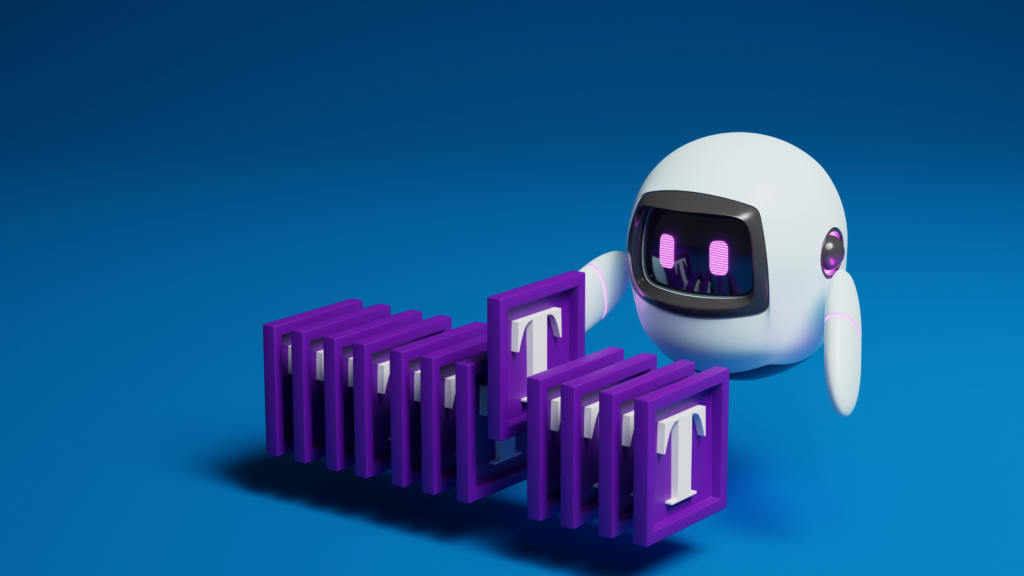Nowadays, everyone is using AI for content creation, especially text. But most of the time, the outcome is of low quality, sounds hollow and spammy. As a result, Google is moving it to the bottom of the results, as nobody expects to find useless content in their feed.
Why is that? Is AI ‘stupid’? Generative AI learns from human experience to create vast data to respond to queries. So, it is not ‘stupid’ – it all depends on how humans communicate with their AI buddies. If the communication is high-quality, the results are remarkable. If the communication is basic, the outcomes are basic.
Here’s where prompt engineering comes into play. With the right prompts and supervision, you can ensure the quality and supercharge your productivity across writing, analysis, brainstorming – you name it.
In this article, I will cover prompt engineering basics like what prompts are and why they matter. You’ll learn best practices, helpful tools, and most importantly, actionable tips. Keep reading to get into prompting in no time!
What Is a Prompt?
A prompt is basically the instructions or input you give to an AI model to get it to generate the output you want.
Think of it this way: you’re playing a video game, and you want your character to do something specific, like perform a cool combo move. You enter a button sequence (the prompt), and boom! Your character acts flawlessly. With AI models, the prompt is the key to getting them to create exactly what you envision, whether it’s writing a blog post, generating an image, or even coding a website.
But here’s the catch: prompts aren’t just simple one-liners; they’re more like mini-scripts that guide the model step-by-step. They can include context, examples, and even specific requirements for the output, like word count or style. It’s like giving your AI buddy a detailed brief for a project, so they know exactly what you’re looking for.
What Is Prompt Engineering?
Prompt engineering is the process of crafting the perfect prompts or instructions to feed these models, so they can deliver exactly what you want – whether it’s essays, mind-blowing images, or even lines of code. If you want to be an AI whisperer and make these models work get skilled at prompt engineering.
Best Practices for Prompt Creation
There are four key dimensions to focus on when writing effective prompts: clarity, context, precision, and persona play.
Clarity
When crafting prompts, clarity is key. Use simple language that’s easy to understand and avoids confusion.
Prompt example: “Generate a list of five healthy breakfast recipes that are suitable for a vegetarian diet. Include a brief description of each recipe and the list of ingredients needed.”
Context
Context is like setting the stage. It gives the AI the background info it needs to understand what you’re asking for. It could include introductory explanations, specifics about people/places/events, or highlighting the key concepts involved.
Prompt example: “Imagine you’re a nutritionist creating a guide for a health-conscious community center. The target audience is families with children aged 5-12 who are looking for nutritious and kid-friendly meal ideas. Your goal is to provide simple yet creative lunchbox ideas that incorporate a variety of food groups. Consider including options that accommodate common dietary restrictions like nut allergies or gluten intolerance. The guide will be distributed at an upcoming health fair, so the recipes should be easy to prepare. Generate five lunchbox ideas along with a brief description of each meal and a list of ingredients.”
Precision
Precision means being crystal clear about what you want. If you want a particular type of response or output, you need to articulate that clearly in the prompt. Using examples can really help illustrate exactly what you’re looking for the AI to generate.
Prompt example: “Generate a list of three low-carb dinner recipes that can be prepared in under 30 minutes. Each recipe should contain no more than 10 ingredients and should focus on lean proteins and non-starchy vegetables. Please include specific cooking instructions for each recipe, highlighting any unique techniques or flavor combinations. For example, you could include recipes for a grilled lemon herb chicken with roasted asparagus, a shrimp stir-fry with broccoli and bell peppers, and a turkey taco skillet with cauliflower rice.”
Persona
Persona prompts are like putting on a character’s hat. Give details and context to help the AI become that character. Want the AI to respond as a historical figure or fictional character? Give it the right contextual framing to play that role.
Prompt example: “Imagine you’re Jamie Oliver, the celebrity chef and advocate for healthy eating. You’ve been invited to write a guest article for a popular health magazine, ‘Wellness Weekly.’ The magazine’s editor has asked you to share your top tips for creating nutritious and delicious meals on a budget. Your article will be read by health-conscious individuals looking for practical advice on improving their diet without breaking the bank. Write an engaging and informative article that highlights affordable ingredients, simple cooking techniques, and creative recipe ideas that prioritize health and flavor. Remember to channel Jamie’s charismatic personality and passion for good food throughout your writing.”
Prompt Engineering Tools
It is not easy to get those prompts just right. That’s where tools come in to help.
First up, you got tools like IBM’s Prompt Lab and Scale AI’s Spellbook. These let you experiment with different prompts, see how they perform with various AI models, and even provide pre-built examples to get you started. It’s like having a prompt playground to test-drive your ideas.
Then there are tools like Dust and PromptPerfect that take things to the next level. With Dust, you can chain prompts together, manage versions, and even code up custom processing logic. PromptPerfect, on the other hand, is all about optimizing your prompts for specific models, whether you’re working with text or image AI.
There is more: platforms like GitHub, and OpenAI Playground offer tons of resources, guides, and spaces to tinker with prompts for different models and use cases. And if you’re a in coding, LangChain is a Python library that lets you build and chain prompts programmatically.
Last but not least, there are even marketplaces like PromptBase where you can buy, sell, or craft prompts for popular AI tools like Midjourney, ChatGPT, and DALL-E. It’s like an Etsy for prompt crafting.
10 Prompt Engineering Tips to Skyrocket Your Productivity
1. Keep It Clear
Start by saying exactly what you need. For example, if you want a summary or a translation, just say so.
Example prompt: “Translate the following English paragraph into Spanish: ‘The quick brown fox jumps over the lazy dog.”
2. Give the Lowdown
Tell what’s important. If it’s a product review, let ChatGPT know what to focus on, like what it can do, how well it does it, and if people like it.
Example prompt: “Write a detailed review of the latest smartphone model X, focusing on its camera quality, battery life, and user experience.”
3. Talk the Talk
Use words that make sense in the topic. If it’s about something specific, use the right words for it.
Example prompt: “Explain the process of DNA replication, highlighting the role of DNA polymerase and the significance of fidelity in maintaining genetic integrity.”
4. Stay Fair
Make sure everyone’s opinions get heard. If you’re talking about something big like climate change, show different sides of the story.
Example prompt: “Write an essay discussing the impact of climate change on global ecosystems, ensuring a balanced representation of perspectives from various stakeholders.”
5. Set the Limits
Tell AI how much you need. If you want a quick summary or a long story, say it upfront.
Example prompt: “Compose a concise summary of the novel ‘To Kill a Mockingbird,’ focusing on its central themes, character development, and narrative structure, in approximately 200 words.”
6. Ask Away
Pretend you’re having a chat. Ask ChatGPT questions like you’re interviewing for it. This is called interview-approach. In such a way, the assistant can cover everything you want to know.
Example prompt: “Imagine you’re being interviewed for a magazine article about your recent book. Answer the following questions: What inspired you to write this book? What themes or messages do you hope readers will take away? Can you share any anecdotes or personal experiences that influenced your writing?”
7. Get the Vibe Right
Let the AI know how you want it to sound. If you want it formal, casual, or maybe something in between, just say the word.
Example prompt: “Write a blog post about the benefits of mindfulness, keeping the tone relaxed and friendly, like you’re chatting with a friend over coffee.”
8. Show, Don’t Tell
Give examples to help ChatGPT understand better. If you want a story, tell it what kind of story you’re after.
Example prompt: “Generate a creative story set in a futuristic dystopian world, inspired by popular science fiction novels such as ‘1984’ and ‘Brave New World.'”
9. Watch Your Words
Think about who’s reading this. Make sure it fits where it’s going and who’s going to read it. Tailor your text prompts to account for linguistic nuances, and cultural sensitivities. Think about factors such as regional dialects, idiomatic expressions, and cultural references when crafting your prompts.
Example prompt: “Write a blog post discussing traditional customs and cultural practices in [specific region or country], highlighting their significance in shaping local identity and heritage.”
10. Fix the Flaws
Don’t leave your AI unsupervised. Check its work to make sure it’s right. If I make mistakes, help me fix them so I can do better next time.
Example prompt: “Generate a technical report on [specific topic], ensuring accuracy and reliability by cross-referencing multiple credible sources and fact-checking the information provided.”
Wrap Up
Here it is. With these prompt engineering tips, tools and basic prompting principles, you’re armed to boost your efficiency with ChatGPT. From clear communication to precision guidance, each strategy ensures that every interaction is qualitative and productive.
Dive in, experiment, and watch the results!




